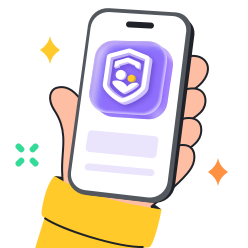The term sneaky link is the latest buzzword making the rounds on teens’ social media forums. Prompting curiosity and worry among parents with kids navigating the digital age.
With digital communication changing how young people build relationships, it’s important to understand what this term means. So, to help facilitate open dialogue between generations.
In this article, we will look into the definition and origins of sneaky link, its usage in teen culture, possible risks. As well as tips for parents to monitor and guide teens in today’s social media.
What does Sneaky Link mean?
The expression “sneaky link” is a widely used acronym embedded in modern slang that captures the covert ways in which present-day digital relationships work.
This term is rooted in social media culture. A sneaky link refers to a clandestine romantic or sexual connection that remains unknown to the public.
The word combines ‘sneaky,’ meaning secretive or careful and ‘link,’ slang for an informal meet up or hookup.
While the term refers broadly to any secretive liaison. It is often used in reference to intimate liaisons that are done deliberately in secret from peers, family, or current partners.
Through social media, the concept gained mainstream traction driven by viral trends, challenges, and music. The hashtag sneakylink has been used billions of times.
For example, the lyrics and soundbites from HXLLYWOOD‘s 2021 song Sneaky Link 2.0 inspired a number of videos from users bragging about their sneaky links.
However, while its veneer is playful, the phenomenon signifies the rising trend of digital-era relationships. In which privacy and low commitment interactions are prioritized.
Stay alert to risky conversations with keyword detection.
How is it used on social media and in youth culture?
The sneaky link trend, which is popular on social media, particularly with Gen Z, thrives off of humor, relatability, and secrecy.



Sneaky links crop up in memes, jokes and song lyrics on platforms like TikTok, Instagram and Snapchat. Where sneaky is used to mean fun, yet risky.
Here is how it works in youth culture:
1. Memes & Jokes
There are plenty of sneaky link memes out there, exaggerating the lengths people will go to hide their secret romantic relationships. Like hiding in closets or sneaking around the house.
For example, Under the caption of ‘When your sneaky link texts ’u up?‘ at 2 AM’. Teens could share a reactionary meme of a person tiptoeing out of house.
They are jokes to entertain while they’re also a coping mechanism for making the awkwardness and risks seem normal.
Young people get to openly discuss sneaky links (because of the humor) and also ease the stigma behind secrecy and casual hookups.
2. Challenges & Trends
Social apps like TikTok are full of sneaky link challenges where people demonstrate a hilarious show of sneakiness and secrecy of these relationships.
The challenges might be “Get Ready With Me” videos from the outfit prep of a sneaky link date. Or maybe a comedic skit about almost getting caught.
These trends usually use the viral Sneaky Link Song as its soundtrack in order to solidify the term’s cultural relevance.
3. Subtle Bragging & Storytelling
Teens use “sneaky link” on TikTok and Instagram to share stories. And drop hints about their secret connections without giving it all away.
For example, a cryptic caption, like ‘sneaky link season’ for example, with a very shady photo. Might hint at the person knowing something that their friends do not.
It’s a subtle brag that brings a social currency of desirability and excitement but without the need to be explicit about it.
4. Music & Slang
The term “sneaky link” blew up thanks in large part to its use in popular music. Most notably with HXLLYWOOD’s “Sneaky Link 2.0” song.
This immediately brought it cultural legitimacy as it now had an instantly catchy soundtrack for its associated themes.
Outside of specific songs, the concept also maps back into older pop culture tropes of secret affairs or ‘friends with benefits’.
Sneaky link is simply the Gen Z update on classic R&B songs about keeping a relationship on the “down low.”
This musical integration serves to normalize the idea and to have a ‘shared reference point’ for people of different generations to start from.
5. Avoiding Scrutiny and Judgment
The primary mission of “sneaky link” in youth culture is perhaps, to simply be sneaky. To not get noticed.
A sneaky link provides casual intimacy devoid of the pitfalls of a public relationship. There is no commitment required.
That’s especially appealing to those who.
- Are already in a primary relationship. An extramarital or unfaithful relationship can be called a ‘sneaky link’ as secrecy is of utmost importance so that it doesn’t get exposed.
- Want to keep things casual. An implicit way of saying, ‘no strings attached.’ Keeping away from the stereotyped expectation that comes with a publicly known relationship.
- Are experimenting or exploring their sexuality. People would prefer to keep these encounters secret, as a way to have privacy and protect themselves from external opinions.
- Fear parental disapproval. A lot of teens are using ‘sneaky links’ to refer to things they wouldn’t want parents to know about, like late nights meetups or romantic encounters.
Essentially, “sneaky link” has become a way to refer to a discreet, possibly casual and at times illicit romantic or sexual connection.
Are Sneaky Links a cause for concern?
While Sneaky link may sound harmless or playful, it can pose several real world risks to teens especially where secrecy and lack of communication is involved.



Here are some of the main worries parents should be alert to.
Privacy and safety risks.
Sharing personal or intimate information with someone you almost don’t know can lead to privacy violations, exploitation or blackmail. If this content is leaked or misused.
Emotional and mental health impact.
Because sneaky links involve secrecy and uncertainty, they can cause attachment issues. And also feelings of shame or guilt especially if the link conflicts with your personal or family values.
Exposure to sexual risks.
Sneaky links often involve unprotected sexual activity, increasing the risk of (STIs) and unintended pregnancies. Moreover, sexting amongst minors also has legal consequences.
Online dangers and predation.
Secretly meeting someone through social media comes with the risk of running into fake profiles, predators or people that aren’t well intentioned.
Cyberbullying and social consequences.
If your sneaky link relationship is found out, it can lead to gossip, bullying or social isolation. All of which can have an incredibly negative effect on a teen’s well being.
The mix of risks associated with sneaky links is something that parents and teens should be familiar with. To be able to foster safer communication and smarter decision making.
How to talk to your kids about online slang and relationships
Given the effects of online slang on teenage relationships, particularly when terms like ‘sneaky link’ are used. It means that parents need to be thoughtful and proactive to help guide kids.
This isn’t about controlling every word teens say. It’s about giving them the understanding and skills to make good choices and the awareness of potential risks.
Here are some ways to help your kids understand online slang and relationships.
- Establish Trust and Open Communication.
Trust is the foundation to any meaningful dialogue with teens. Don’t approach the topic with judgment, instead approach it with curiosity.
- Encourage digital literacy.
Explain to kids that slang and trends can mean different things and not everything they see on TikTok or Snapchat is healthy or safe.
- Talk about safety and consent.
Safety needs to be an integral part of your discussion. Talk about the need to set some clear boundaries in whatever online relationship you have.
- Discuss personal values and expectations.
Let your child know your family beliefs and values in an open manner. Challenge them to think about what they want from the relationships they are in.
- Model healthy communication.
Share your own experiences from relationships and social challenges. To show them that it’s normal to have questions and to mess things up.
The openness in this approach can help further the conversation between you and your child. As they deal with the tricky aspects of online slang and relationships.
How can parents protect kids when they chatting online
With slang terms like sneaky link becoming common in teen online conversations. It is now more important than ever for parents to stay involved with their child’s digital life.
While open communication and trust are key. Technology can serve as an added layer of protection, particularly when they are chatting on digital platforms that are not trusted.
That’s where parental control apps come in. With increasingly savvy teens, parental controls can provide insights that will allow you to monitor your child’s interactions discretely.



FlashGet Kids is one such app that serves as a smart, nonintrusive tool. And, it’s designed to support parents in navigating their children’s online interactions safely.
FlashGet Kids comes with a complete suite of features that make it easy for parents to safeguard their children online. This includes the capacity to.
Monitor suspicious chats and keywords
Parents can use FlashGet Kids to track keywords or phrases that may mean trouble. Like for example, references to a sneaky link or other slang for risky behavior.
The app can then send alerts if those words show up in your child’s messages or search activity. Giving you a moment to intervene before things get too far.
Usage Reports: Know what’s happening online
Do you want to know which apps your kid is spending time on and for how long? FlashGet Kids provides detailed usage reports, allowing you to monitor your child’s online behavior.
With this, you get a clear picture of their digital world. Knowing who they might be chatting with or which apps they are opening most of the times without having to look over their shoulder.
Screen Time control: Prevent late-night Sneaky Link chats
FlashGet Kids enables you to set up daily screen time limits and bedtime schedule. To ensure your kids won’t stay up late chatting or browsing.
This means less sleep disruption and fewer chances for secret online chats when teens don’t feel monitored.
Real-time Alerts and app blocking
FlashGet Kids can alert you in real time if your child tries to access risky websites or download inappropriate apps. And as such, you can block the apps instantly.
Overall, it gives you the power to instantly take action and keep your child away from those potentially harmful platforms.
Conclusion
As we have seen, Sneaky link is a term that refers to a secretive, often casual romantic or sexual connection. That teens and young adults keep secret from people around them.
While sneaky links might seem like harmless fun or a secret way to explore relationships. They often have emotional, physical and social risks that parents and teens need to be wary about.
However, by using tech tools like FlashGet Kids alongside trust based conversations. Parents can keep a balanced and effective watch over their children in the virtual world.

